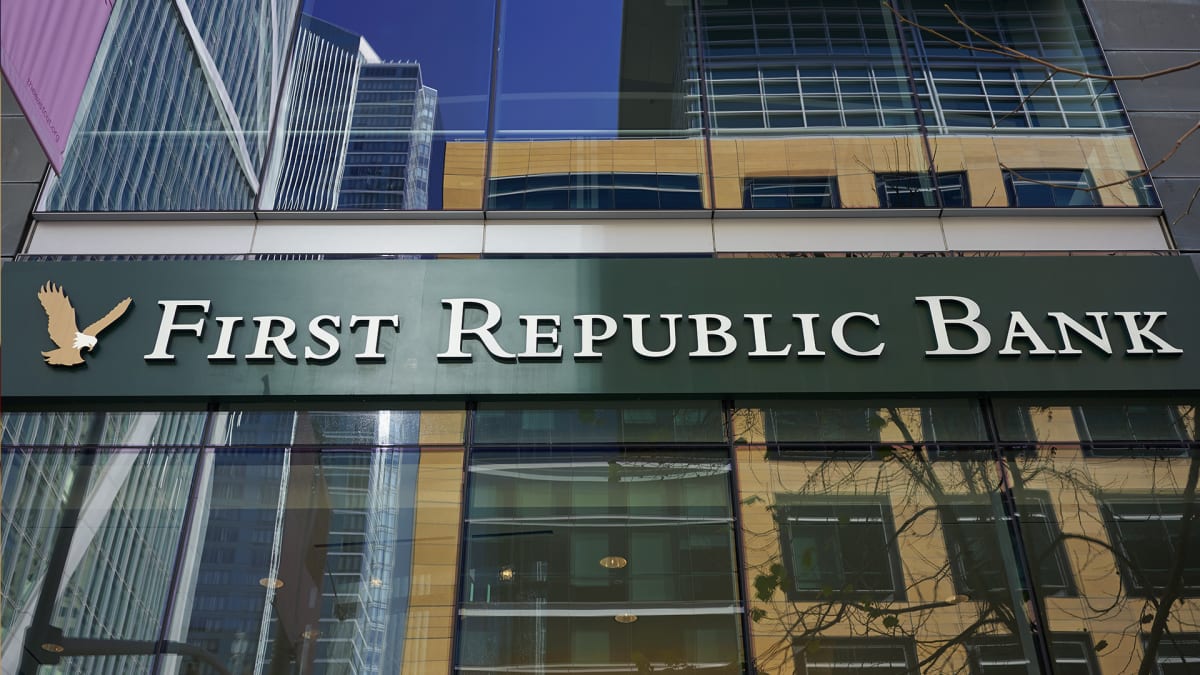
The lull only lasted a month, as the banking crisis is making a comeback but may claim another victim in the last hours of April.
California’s First Republic Bank (FRC), like its neighbor Silicon Valley Bank (SIVB) on March 10, could finally give in, victim of a run by its customers. All signals are red.
This week, its stock price is down 75.4%. The FRB stock went from $14.26 on Apr. 21 to $3.51 on April 28. It is a stock market bloodbath.
To understand the situation in which First Republic Bank finds itself, remember that the banking crisis started on March 10 with the failure of SVB.
The Origin of the Crisis
Santa Clara, Calif.-based SVB was the go-to lender for many tech companies, providing specialized financial services, industry expertise, a valuable network, and a strong reputation. It also offered a range of financial services, tailored specifically to the needs of startups, such as venture debt, corporate banking and asset management to help startups manage their finances, optimize their cash flow and scale their businesses.
Created in 1983, Silicon Valley Bank, which presented itself as a "partner for the innovation economy,” offered higher interest rates on deposits than its larger rivals, to attract customers. The company then invested its clients' money in long-dated Treasury bonds and mortgage bonds with strong returns.
This strategy had worked well in recent years. The bank’s deposits doubled to $102 billion at the end of 2020 from $49 billion in 2018. In 2022, deposits increased to $189.2 billion.
But everything turned upside down when the Federal Reserve began to raise interest rates, which made existing bonds held by SVB less valuable. The bank had to sell the bonds at a discount to cover withdrawals from its customers. In selling these bond positions, SVB had to take a significant loss of $1.8 billion.
Due to this loss, SVB suddenly announced that it needed to raise additional capital of $2.25 billion, by issuing new common and convertible preferred shares. This decision caused panic and a run on the bank.
In addition to SVB, fears of contagion have already led to the closure of Signature Bank in New York (SBNY) on March 12. Since then, concerns about the deposits in other small banks with assets below $250 billion have intensified in particular because the Federal Deposit Insurance Corporation guarantees deposits up to $250,000 only. Basically, all individuals with more than $250,000 in their accounts would lose anything above the FDIC threshold if the bank defaulted.
Massive Withdrawals
Enter First Republic Bank, which has a similar profile with SVB, and has a significant portfolio of municipal bonds. The bank is popular with wealthy people to whom, for example, it provides mortgages at low interest rates. About two-thirds of deposits at FRB are uninsured with the FDIC. Unsurprisingly, these depositors rushed to withdraw their funds.
FRB said this week that deposits fell 41% to $104.5 billion in the first quarter. The drop was much larger than analysts had expected. They had estimated that deposits would fall to $136.7 billion during the first three months of the year.
This development has revived a ghost. At the end of 2022, First Republic Bank had a ratio of 111% of loans and long-term investments to deposits, according to S&P Global. Basically, the bank has loaned and invested more money than it has in deposits, subjecting it to liquidity risk.
"We are working to decrease our loan balances to correspond with our reduced reliance on uninsured deposits. We are doing so by moderating our loan volumes and we are focusing on originating loans to sell in the secondary market," chief executive officer Mike Roffler told analysts during the first quarter earnings' call on April 24.
The call had no Q&A session.
Roffler also tried to reassure investors by asserting that First Republic Bank had $45.1 billion of available unused borrowing capacity and cash on hand as of April 21.
"This available liquidity is more than 2 times our uninsured deposits. Excluding the $30 billion of uninsured deposits received from the large banks," the chief executive said, referring to the $30 billion in deposits made last month to First Republic Bank by a coalition of 11 U.S. banks, to shore up its liquidity as it was facing a run.
"As the industry events unfolded in March, we experienced unprecedented deposit outflows," Roffler told analysts. "Beginning the week of March 27, our deposits stabilized and they have remained stable since that time."
He added: "Total deposits as of April 21, including the $30 billion received from the large banks were $102.7 billion, down only 1.7% from the end of the first quarter. This slight decline from March 31 reflects seasonal client tax payments that occur each April."
Bailout?
All these statements have failed to reassure investors, who are hoping for the arrival of a white knight. The White House has reportedly ruled out a public bailout of the bank, as was the case for SVB.
The scenario currently put forward is that the FDIC can take it into receivership, according to CNBC. Receivership protects a troubled company and aims to aid creditors. During a receivership, the receiver manages the entire company, its assets, and all financial and operating decisions.
Other scenarios are in play. The FDIC, the Treasury Department and the Federal Reserve are also in discussions to try to find a rescue plan, according to Reuters. The bank is also trying to convince the big banks to buy its bonds and other assets at a loss. This solution would be less painful if FRB were to fail, according to the firm.
First Republic Bank declined to comment.
The bank has lost investor confidence. Under these circumstances, it is hard to see how it can survive on its own. A solution should be found over the weekend to avoid a stock market crash of First Republic Bank when the markets reopen on May 1.







